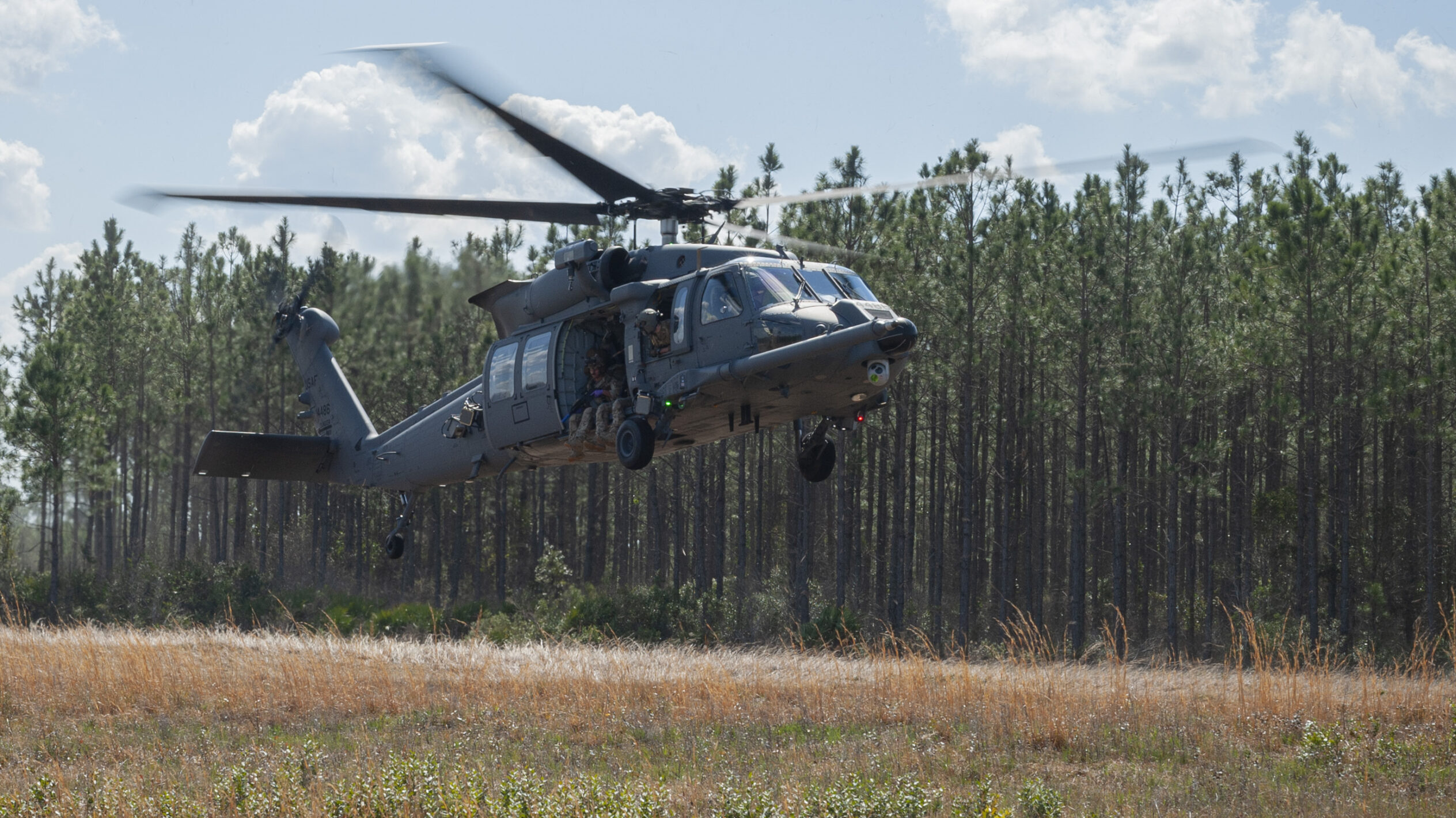
An HH-60W Jolly Green II prepares to land during a simulated rescue mission Feb. 25, 2021, at Moody Air Force Base, Georgia. (US Air Force/Jasmine M. Barnes)
Edited at 3/28/22 at 3:52pm EST to include information about squadrons that will not field the HH-60W.
WASHINGTON: The Air Force will stop buying its new combat search and rescue helicopter after purchasing its last 10 HH-60W Jolly Green IIs in fiscal year 2023, leaving the service about 25 HH-60Ws short compared to the number of rescue helicopters flown today and raising questions about the future of the combat search and rescue mission
The decision to truncate the buy, announced during the release of the FY23 budget today, will leave the Air Force with a total of 75 HH-60Ws, just two-thirds of the planned buy of 113 HH-60Ws over the program of record. The Air Force currently operates a fleet of 99 HH-60G Pave Hawks for personnel recovery missions.
Air Force Secretary Frank Kendall said the service ultimately opted to end procurement of the HH-60W due to the changing threat environment, as the service looks toward more advanced adversaries like Russia and China.
For more coverage of the FY23 budget request, click here.
“The scenarios that we’re most worried about are not the same as they once were,” Kendall told reporters in a briefing Friday ahead of the budget. “When we were doing counterinsurgencies, and we were losing pilots in those kinds of situations, the needs were different. The acts of aggression like we’re seeing in Europe, or we might see the Pacific … put us in a very different scenario.”
The HH-60W is a derivative of Sikorsky’s ubiquitous UH-60 Black Hawk, which was also the model for the Pave Hawk. The Air Force requested $870 million for 10 HH-60Ws in FY23 and plans to declare the Jolly Green II fully operational in 2022, according to the service.
The Air Force’s decision to curtail the buy raises major questions about the future of the service’s combat search and rescue mission. The UH-60G Pave Hawk entered operations in the early 1980s and have been flown hard over the past two decades during the wars in Afghanistan and Iraq.
In 2018, Defense News reported that most of the Pave Hawks flown by 33rd Rescue Squadron at Kadena Air Base in Japan — which frequently deployed to Afghanistan — were nearing or had already exceeded the 7,000-hour service life. As a result, maintainers were often tasked with remedying cracks in helicopter’s frame or repairing other structural issues that had begun to surface.
The 41st Rescue Squadron at Moody Air Force Base in Georgia and the 512th Rescue Squadron at Kirtland Air Force Base in New Mexico are the first two locations fielding the HH-60W, the Air Force stated in a news release.
It is unclear what will happen to the the HH-60G squadrons that do not receive the new HH-60W, nor what will happen to the airmen assigned to those squadrons. Pave Hawk crews include two pilots and two special mission aviators who operate the guns and perform flight engineer duties.
“Nellis AFB and Kirtland AFB are the only two locations that will no longer operate HH-60 aircraft and the Air Force is finalizing future plans for these locations,” the Air Force said in statement to Breaking Defense. “Until divestment these locations will continue to operate their HH-60G aircraft along with a multitude of other platforms at each location.”
The HH-60W boasts a number of improvements when compared to the legacy Pave Hawk. It has a new fuel system that holds double the amount of fuel as the UH-60M Black Hawk, allowing it to fly further and for longer periods of time — a major asset when rescuing injured troops on the battlefield. It also has more advanced defensive systems, modern mission systems and flight navigation tools, and sensors with improved functionality in bad weather.
The HH-60W first flew in May 2019. Earlier this month, Air Force acquisition officials confirmed that the helicopter will begin initial operational test and evaluation in the coming weeks.






















